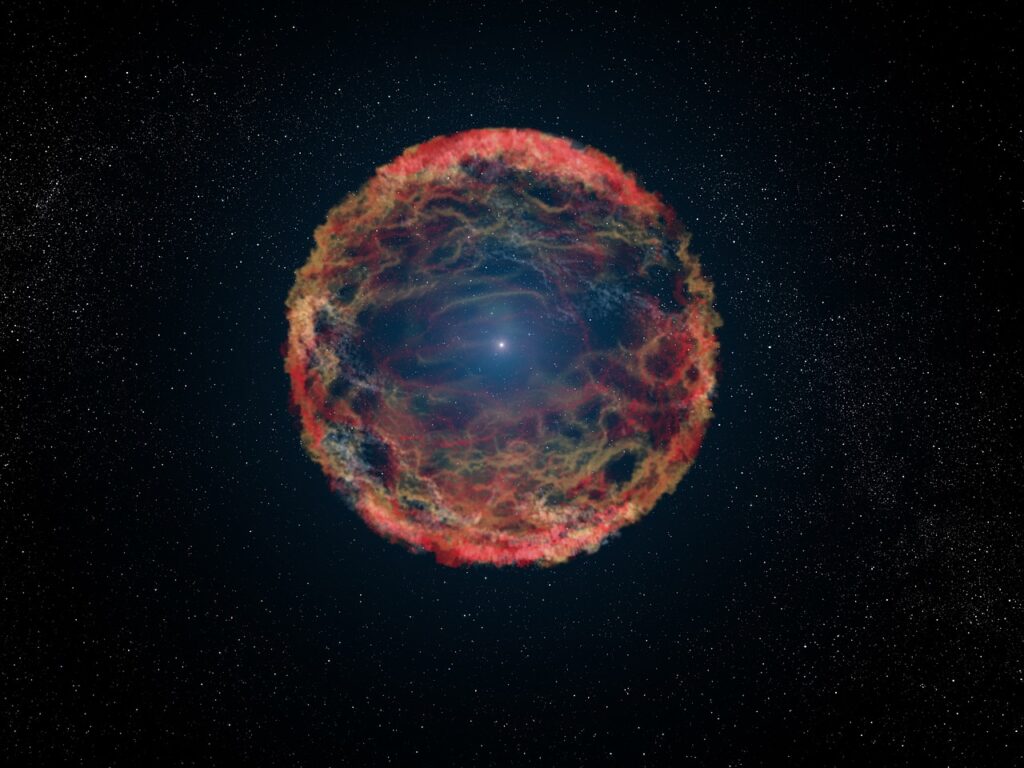Stars have a life cycle wherein massive stars die with spectacular explosions called a supernova that can outshine entire galaxies and now, astronomers have identified the most powerful of these explosions we have ever seen in history.
The supernova, named SN2016aps, was observed by the Panoramic Survey Telescope and Rapid Response System (PanSTARRS) on 22 February 2016, in a galaxy 4.5 billion light-years from Earth.
After studying it, astronomers have determined that SN2016aps was 500 times brighter than typical supernova explosions. It is said to be the brightest, most energetic and maybe even the most massive supernova we’ve ever seen which puts it in the category of a hypernova.
“SN2016aps is spectacular in several ways,” explained Edo Berger, an astronomer from Harvard University. “Not only is it brighter than any other supernova we’ve ever seen, but it has several properties and features that make it rare in comparison to other explosions of stars in the Universe.“
Although the peak of the explosion was observed January 2016, astronomers kept an eye on SN2016aps to see how this object dimmed.
Dr. Matt Nicholl, an astronomer at the University of Birmingham, is the lead author of the study.
The total kinetic energy of SN2016aps was around 5×1052erg, putting it about on a par with the famous 1998 hypernova SN1998bw, from a progenitor star 25 to 40 times the mass of the Sun. But the peak luminosity of SN2016aps was 4.3×1044 erg, over 40 times brighter than SN1998bw’s 1×1043erg peak luminosity.
“The intense energy output of this supernova pointed to an incredibly massive star progenitor,” Berger said. “At birth, this star was at least 100 times the mass of our Sun.“
Even so, it’s unlikely that this star could have produced such a colossal explosion on its own. In fact, there’s something really peculiar about it, as spectroscopic observations of the supernova revealed.
“We determined that in the final years before it exploded, the star shed a massive shell of gas as it violently pulsated,” said astronomer Matt Nicholl. “The collision of the explosion debris with this massive shell led to the incredible brightness of the supernova. It essentially added fuel to the fire.“
Although it’s normal for dying stars to shed mass, usually stars do not shed that much mass in such a short timeframe, so soon before exploding. Further research is needed on how and why this happened.
High levels of hydrogen were also found in the explosion, which was a bit puzzling as hydrogen is ejected by massive stars before going supernova. But there is an answer for this that the one big star was once two smaller stars that merged.
“That SN2016aps held onto its hydrogen prompted us to theorize that two less massive stars had merged together since lower mass stars hold onto their hydrogen for longer,” Berger said.
The mass and hydrogen abundance of this merged progenitor star made us to put SN2016aps into a rare type of supernova only seen in very massive stars rich in hydrogen and helium called a pulsational pair-instability supernova which is an event that looks like a very bright supernova, but only part of the star’s mass is blown off into space, leaving behind a lower-mass star that will eventually undergo a real supernova.
As SN2016aps has been identified now, we’ll be able to search for more events like it which will help us characterize these incredible explosions.
“The identification of SN2016aps has opened pathways to identifying similar events from the first generations of stars,” Berger said.
The research was published in Nature Astronomy.

